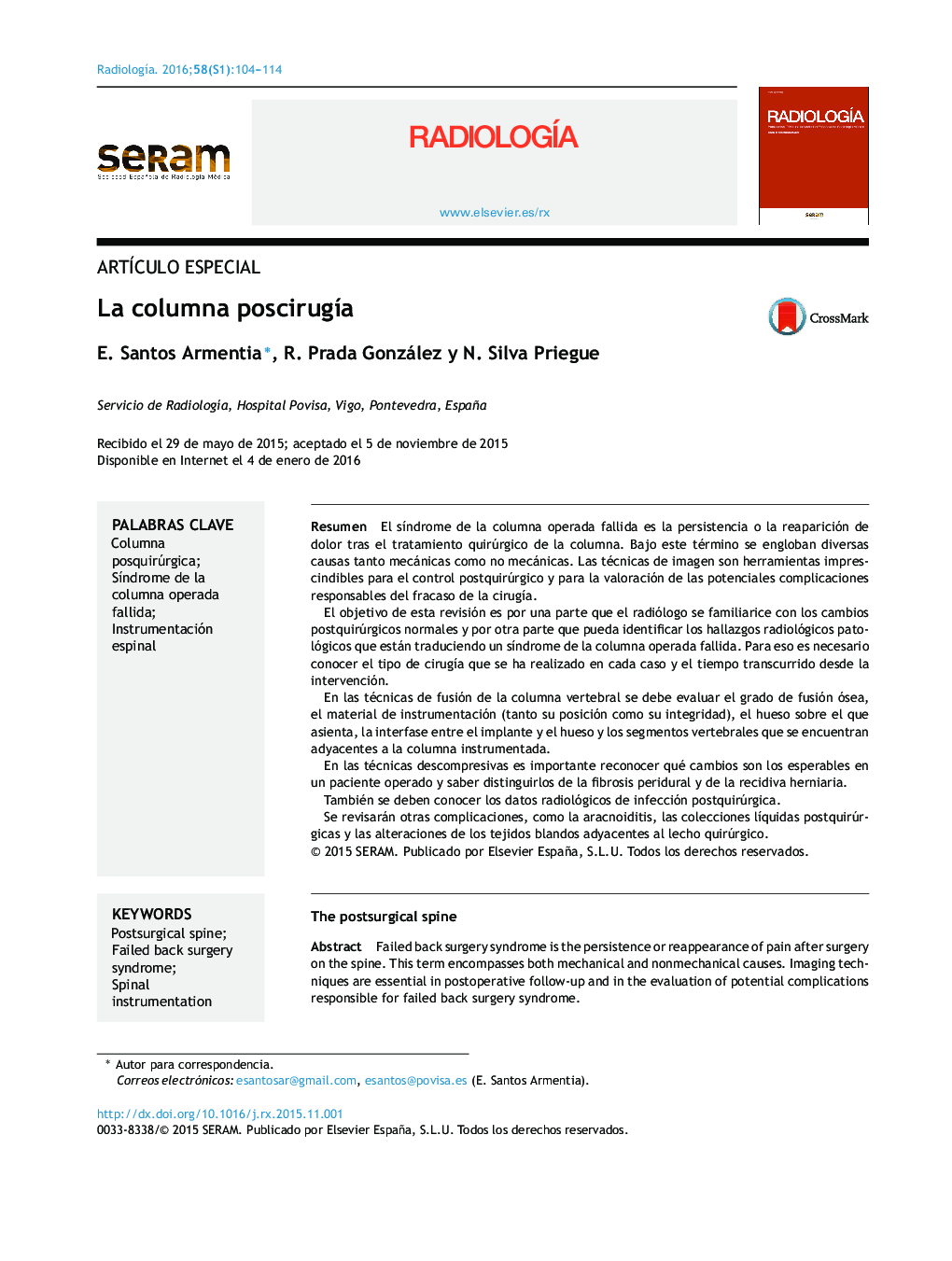| Article ID | Journal | Published Year | Pages | File Type |
|---|---|---|---|---|
| 4245077 | Radiología | 2016 | 11 Pages |
ResumenEl síndrome de la columna operada fallida es la persistencia o la reaparición de dolor tras el tratamiento quirúrgico de la columna. Bajo este término se engloban diversas causas tanto mecánicas como no mecánicas. Las técnicas de imagen son herramientas imprescindibles para el control postquirúrgico y para la valoración de las potenciales complicaciones responsables del fracaso de la cirugía.El objetivo de esta revisión es por una parte que el radiólogo se familiarice con los cambios postquirúrgicos normales y por otra parte que pueda identificar los hallazgos radiológicos patológicos que están traduciendo un síndrome de la columna operada fallida. Para eso es necesario conocer el tipo de cirugía que se ha realizado en cada caso y el tiempo transcurrido desde la intervención.En las técnicas de fusión de la columna vertebral se debe evaluar el grado de fusión ósea, el material de instrumentación (tanto su posición como su integridad), el hueso sobre el que asienta, la interfase entre el implante y el hueso y los segmentos vertebrales que se encuentran adyacentes a la columna instrumentada.En las técnicas descompresivas es importante reconocer qué cambios son los esperables en un paciente operado y saber distinguirlos de la fibrosis peridural y de la recidiva herniaria.También se deben conocer los datos radiológicos de infección postquirúrgica.Se revisarán otras complicaciones, como la aracnoiditis, las colecciones líquidas postquirúrgicas y las alteraciones de los tejidos blandos adyacentes al lecho quirúrgico.
Failed back surgery syndrome is the persistence or reappearance of pain after surgery on the spine. This term encompasses both mechanical and nonmechanical causes. Imaging techniques are essential in postoperative follow-up and in the evaluation of potential complications responsible for failed back surgery syndrome.This review aims to familiarize radiologists with normal postoperative changes and to help them identify the pathological imaging findings that reflect failed back surgery syndrome. To interpret the imaging findings, it is necessary to know the type of surgery performed in each case and the time elapsed since the intervention.In techniques used to fuse the vertebrae, it is essential to evaluate the degree of bone fusion, the material used (both its position and its integrity), the bone over which it lies, the interface between the implant and bone, and the vertebral segments that are adjacent to metal implants.In decompressive techniques it is important to know what changes can be expected after the intervention and to be able to distinguish them from peridural fibrosis and the recurrence of a hernia.It is also crucial to know the imaging findings for postoperative infections. Other complications are also reviewed, including arachnoiditis, postoperative fluid collections, and changes in the soft tissues adjacent to the surgical site.
